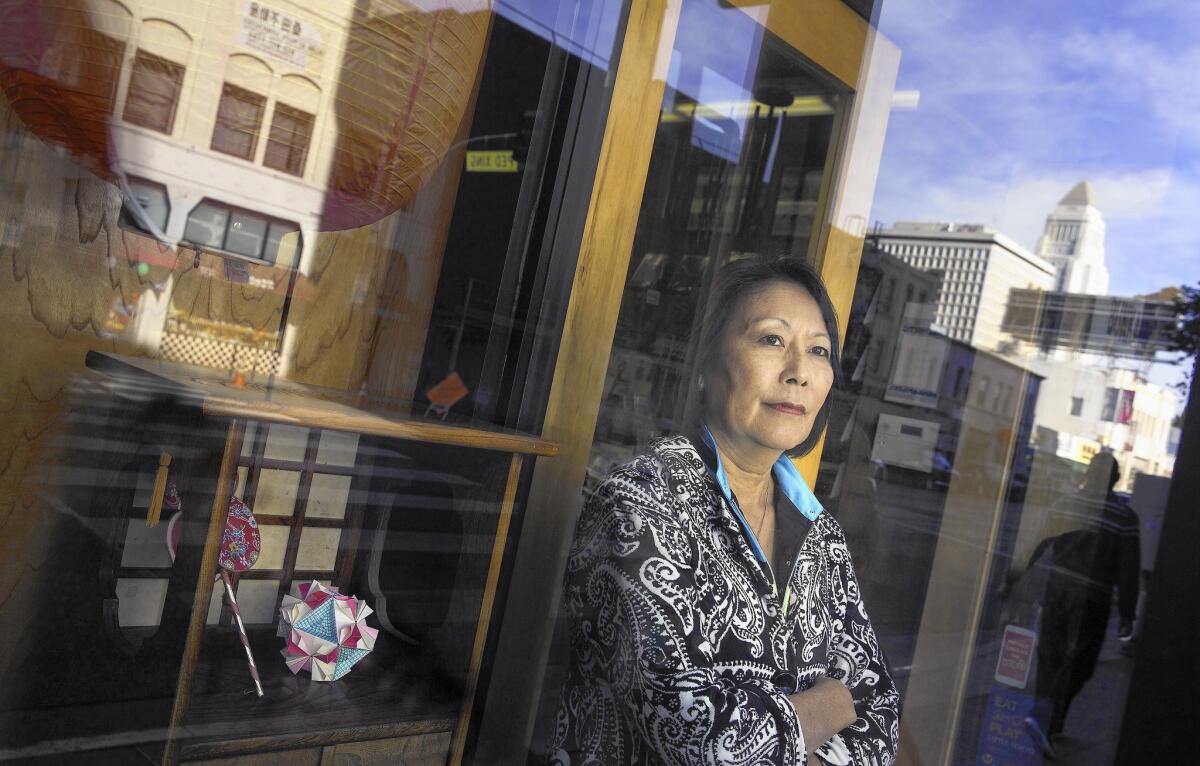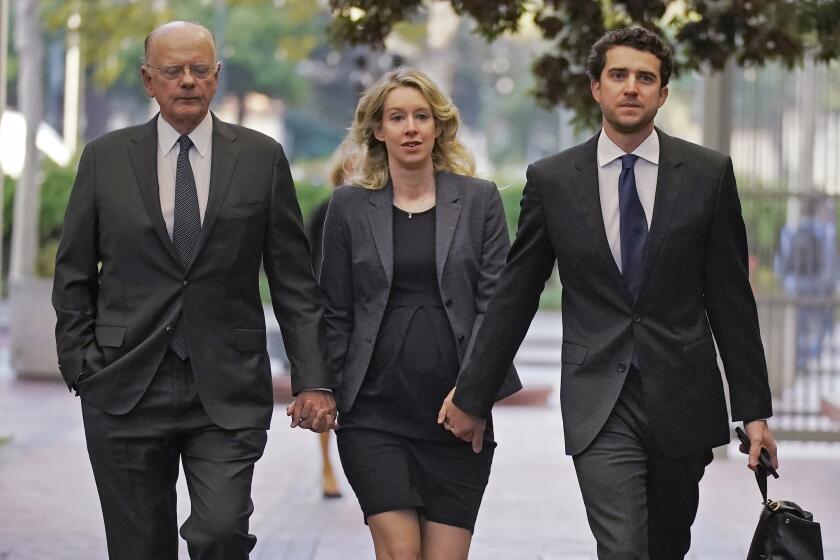Nearing the holidays, Little Tokyo stores get a reprieve from Metro construction

- Share via
December is a busy month for Little Tokyo gift shop owner Irene Tsukada Simonian.
It’s not quite like the “old days” in the 1960s and 1970s when her family’s store, Bunkado, had three cash registers and lines of customers waiting at each one. But on peak weekends, shoppers will still form a queue in front of the register, pushing December sales two to three times above those of a normal month, Simonian said.
Although Black Friday traditionally has been the biggest sales day for many of the nation’s retailers, Little Tokyo business owners rely on December — especially the run-up to New Year’s Day — as one of their most important sales periods. This year, that business bonanza faced an unexpected threat from an accelerated subway construction project that would disrupt access to stores.
There’s a lot at stake for Little Tokyo merchants. New Year’s Day is particularly significant in Japanese culture: The annual Oshogatsu festival in Little Tokyo often draws crowds of 10,000 to 15,000, business owners said.
Thousands visit Koyasan Buddhist Temple on East 1st Street for the New Year’s blessing, and other events include a sake barrel breaking and Japanese taiko drum performances. Visitors often stream in from throughout the greater Los Angeles area, as well as from out of state.
Brian Kito, owner of his family’s 112-year-old Japanese confectionary store, Fugetsu-Do, said he makes about 25% of his yearly sales in December, as shoppers stock up on mochi for holiday gifts and New Year’s celebrations. In the last week of December, his store runs almost 24 hours each day to keep up with production for New Year’s shoppers.
“It’s been getting bigger every year,” he said of the New Year’s festival. “It brings an amazing number of people.”
In addition to typical gift purchases for the holidays, shoppers also visit Japanese grocery stores to pick up food for traditional feasts or to buy new household items for the New Year. Little Tokyo merchants estimate that they make about 20% of their annual sales in December, said Ellen Endo, president of the Little Tokyo Business Assn.
NEWSLETTER: Get the day’s top headlines from Times Editor Davan Maharaj >>
“It’s a month we really count on to offset some of the slower months,” said Kenji Suzuki, owner of Suehiro Cafe, which his mother opened in 1972. “Any time there’s foot traffic, we do well.”
Merchants were dismayed to find out two weeks ago that construction on the 1.9-mile Metro Downtown Regional Connector had been bumped up from its planned start date in February to Friday.
The regional connector project is designed to connect three of Los Angeles County’s rail lines so riders can travel from Azusa to Long Beach and from East L.A. to Santa Monica without transferring. It’s scheduled to be completed by 2020.
At a community meeting in Little Tokyo on Monday night, Metro Chief Executive Phillip Washington said the December construction start was needed to ensure that the Gold Line extension to Azusa would open as expected on March 5.
By starting construction early, he said, Metro could avoid future cost increases by maximizing “construction efficiencies.” The work would also replace an aging 36-inch water line pipe, which was not part of the original plan.
“We know that December is a special month, and if we had any other way to do this without impacting December and the Jan. 1 date, we would,” Washington said during the meeting. “But if we start in January, we begin to bump up against the impacts to open the Gold Line, and it becomes a full regional impact if we bump up against that March 5 date.”
Community and business leaders sent letters to elected officials, filed an ex parte motion to stop construction and attended the Thursday meeting of the L.A. County Metropolitan Transportation Authority Board of Directors.
On Thursday, the MTA board of directors voted to push construction back to early January — after New Year’s Day. As part of the agreement, the Little Tokyo Business Assn. will not file a court challenge to the January plans.
The construction, which will occur on 1st and Alameda streets, will involve closing some streets and the Little Tokyo/Arts District station. The work is expected to take three months.
In a statement, Metro said the decision was made to “reduce negative impacts” of the construction during the holiday shopping season.
“It’s a good outcome — it was a tough fight,” Endo of the Little Tokyo Business Assn. said. “We’re optimistic that we can move forward with Metro now with a renewed mutual respect and an understanding that we both want what’s for the betterment of Little Tokyo and in support of an adequate and efficient transportation system.”
When construction begins in January, Metro said it will implement a number of measures to mitigate the effect on businesses, such as a free shuttle bus service with four stops to ferry people every day from 10 a.m. to midnight, and a parking validation program that will provide two hours of free parking at three locations along the shuttle route.
Metro will also have a Business Interruption Fund to help merchants who have been affected by the construction, although Little Tokyo merchants want to meet with officials to clarify the requirements for applications.
Metro’s contractor also said there would be crew members on the street to answer questions and direct drivers, as well as electronic message boards.
This all comes as Little Tokyo has seen a resurgence in business after the economic difficulties of the late 1990s and early 2000s. Young people frequent the stores and restaurants in the area, the neighborhood is more accessible to pedestrians and visitors feel safe.
“We’ve seen worse days, and we’ve seen better days,” said Simonian of Bunkado. “And we’re still here.”
Twitter: @smasunaga
MORE FROM BUSINESS
Coming to select theaters: Sensory-enhanced movie viewing
Even in fraud cases, Wells Fargo customers are locked into arbitration
Super Evil Megacorp sees big potential in eSports for mobile game ‘Vainglory’
More to Read
Inside the business of entertainment
The Wide Shot brings you news, analysis and insights on everything from streaming wars to production — and what it all means for the future.
You may occasionally receive promotional content from the Los Angeles Times.











